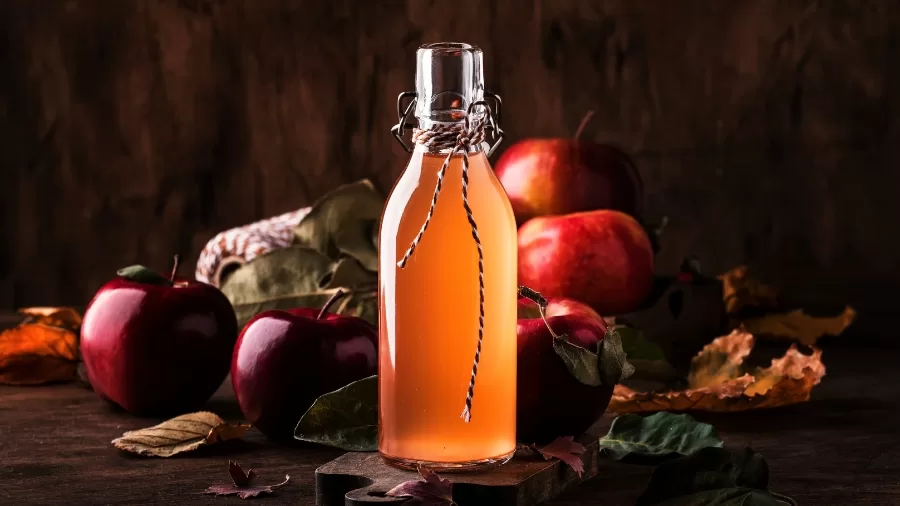Food & Beverage
The Untold Story of American Cider

- American cider is having a resurgence, with brewers striving to reclaim its identity and reconnect with customers in all 50 states.
- Cider is technically classed as wine in the United States, yet many people connect it with beer because of its packaging and lower alcohol content.
- The industry is focussing on educating customers about cider’s unique features, flavours, and adaptability, portraying it as a distinct beverage worth appreciating.
American cider is seeing a tremendous revival. Cider makers in all 50 states are trying hard to reinvent this once-popular drink and reintroduce its numerous choices to customers. As with any relationship, initial awkwardness is unavoidable in this path of rekindling interest.
Cider has traditionally been sold alongside beer on store shelves, but it is actually a sort of wine. Both beverages are made by fermenting juice, but cider makers in the United States want to establish a specific character that sets them apart from other categories.
According to Aaron Walker, head of winemaking operations at Pali Wine Company in California, cider makers have a significant opportunity to carve out their own niche. They have rich storylines that connect with consumers, improving the whole drinking experience.
A Journey through Cider’s History
The history of American hard cider is rich in legend, dating back to the colonial era, when it was more popular than water. However, the introduction of Prohibition resulted in a drop in orchard planting and cider output, which were surpassed by industrial beer brewing and the domestic wine market.
To restore its place as America’s favourite beverage, the cider sector must foster a greater knowledge of its identity among consumers.
Understanding Cider
Cider is an alcoholic beverage made from fermented apple juice. While some cider manufacturers assert that it is distinct from wine, others see value in their similarities. Todd Cavallo of Wild Arc Farm in New York’s Hudson Valley believes that comparing the two yields useful knowledge. He has observed that in certain places, the phrase for cider translates as “apple wine,” emphasising the similarities.
Cider as Wine
Cider is categorised as wine in the United States, though this is not commonly acknowledged. Many cider drinkers in major cider-producing countries such as the United Kingdom and South Africa identify it with beer, considering it as a bubbly, low-alcohol beverage generally served in taverns.
Cider’s higher manufacturing costs are more comparable to winemaking than to beer brewing. Many people assume cider to be more affordable, typically putting it in the same price range as beer, despite its more sophisticated production process, which is similar to that of wine.
The New Wave of Cidermakers
Despite common beliefs, cider is a type of wine, even though customer perceptions vary. It usually has a lower alcohol by volume (ABV), often less than 7%, making it a lighter, easier-to-drink option with more complex flavour profiles.
Some cider producers experiment with wild yeasts or specific fermentation procedures, resulting in unique flavours that set cider apart from standard wines. These diverse characteristics contribute depth and complexity to the cider experience.
Comparing Cider, Beer, and Wine
Cider and wine have numerous similarities, including the possibility of complexity, body variances, and a wide range of sweetness levels. However, their packaging and presentation can vary. Wine is often sold in exquisite 750mL bottles, whereas cider is frequently found in cans, which can influence consumer perceptions of value.
Cider producers are increasingly packaging their products in the same way that wine is, and displaying them on retail shelves alongside it. This adjustment is critical for appealing to wine drinkers, who may otherwise overlook cider due to its presentation.
Appreciating Cider as a Wine
To fully enjoy cider, drinkers should approach it with an open mind and a feeling of wonder. Cider may surprise wine aficionados by giving a wide range of flavours from numerous apple kinds, similar to the diverse grape selections used in wine production.
Cider manufacturers understand the need to demystify the product for new customers. Engaging with drinkers, understanding their tastes, and guiding them through sampling experiences are critical to helping them appreciate the full range of cider choices.
Eden Ciders‘ sales director, Riley Duffie Bresnahan, observes that there is a cider for every occasion. Accepting the diversity of this beverage might lead to a deeper appreciation for its flavours and styles.
Conclusion
The American cider business is poised for a huge comeback, providing consumers with a diverse range of flavours, stories, and experiences. Cider can restore its position in the hearts of drinkers across the country by acknowledging its uniqueness as a distinct beverage separate from beer and wine. The journey to rediscover cider is about more than just the beverage; it’s about connecting with the culture and history that have made it such a popular choice for many people.


















































